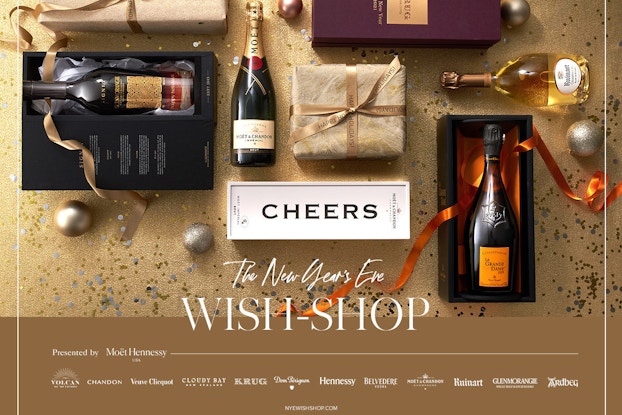
Why it matters:
- E-commerce sales have remained elevated post-pandemic, with first quarter online sales up 39.1% over year-ago levels, according to the U.S. Commerce Department.
- Today, consumers expect to be able to buy directly from brands and to be able to communicate with them too, said Bruce Krinsky, founder of TOV Furniture.
- Distinct digital sales channels —from DTC to B2B — require different approaches to branding, product distribution, pricing and more.
Pandemic-driven restrictions fueled the rapid growth of digital commerce during the past year, forcing companies to quickly rethink their core strategies around how to provide goods and services to their customers.
For many companies, these new digital strategies will have staying power: They opened up new direct-to-consumer (DTC), business-to-consumer (B2C) and business-to-business (B2B) revenue streams, accelerating changes that had slowly been gaining traction anyway, executives told CO—.


Data from the U.S. Commerce Department shows that e-commerce has had lasting momentum in 2021, with first-quarter e-commerce sales up 39.1% over year-ago levels and accounting for about 13.6% of total retail sales.
Brand storytelling certainly looks different in a digital environment. There are marketing approaches that might be familiar in other industries but [are] new in alcoholic beverages, and that’s where we [are] developing quickly.Emma de Szoeke, senior vice president of consumer insights, Moët Hennessy
Adding a DTC revenue stream
“With all of the retail stores closed, it turned out to be the ideal time for direct-to-consumer,” said Bruce Krinsky, founder of TOV Furniture, which traditionally sells furniture to dealers, retailers and other B2B customers. Historically it has sold its products through retailers that include Bed Bath & Beyond and Walmart, e-commerce giants Amazon and Wayfair, and numerous local furniture stores.
Krinsky said that like many companies, TOV had long been averse to selling directly to consumers because the company didn’t want to compete with its own retail customers. Now, however, it has found that by carefully managing its online offerings and its relationships with its retail customers, it has been able to grow a thriving direct-to-consumer business.
Total sales at the company were up about 60% last year, and have continued to grow, despite the supply-chain and inventory challenges that have plagued importers and manufacturers. Direct-to-consumer sales now make up a low-double-digit percentage of the company’s total revenues, Krinsky said.
“It has grown very quickly to become a very valuable part of the business,” he said.
Marketing and selling directly to consumers also help the company spread its brand messaging, Krinsky, said, which in turn helps its retail partners. The company has a robust following on social media, thanks in part to its chic and affordable product assortment designed to appeal to women in particular.
In order to successfully implement its direct-to-consumer platform, TOV implemented distinct strategies to manage multiple revenue streams. Its DTC site offers pricing that doesn’t undercut its retail customers, and it develops exclusive furniture, using different colors and fabrics, for example, for some retail partners to avoid competing head-to-head with them.
“We are trying to expand our brand, which ultimately expands the business for dealers as well,” said Krinsky.
The ramp-up of the company’s direct-to-consumer channel also involved the creation of a new website and some additional training and additions to the workforce. Customer service in the B2C environment is much different than in the B2B environment, he pointed out, as consumers often don’t understand the supply chain issues that could be causing shipping delays, for example.
The company was easily able to transition to the direct-to-consumer shipping environment, he said, because it had already been drop-shopping (where the seller accepts customer orders but does not keep goods sold in stock) furniture to consumers who purchased product from retail store showrooms, for example.
[Read here on other pandemic business changes that are here to stay.]
Inventory data drives decisions
TOV also relied on technology to help coordinate its multi-channel expansion. It leverages technology from NetSuite, for example, that enables it to view centralized inventory data in real time to gain insights into performance that it can act on quickly.
The technology “allows us to see what percent of our business we were doing through different channels, almost in real time, versus the end of the month, sitting down with the accounting department and trying to sort through things,” he said.
Krinsky said companies should not be afraid to make the leap to selling directly to consumers.
“Consumers expect to be able to buy things directly today,” he said. “People want to order from companies and ask them questions. Companies were afraid because they didn’t want to [anger] their retail customers; but in the future, companies are going to have to make that transition and find a way to coexist in both worlds.”
[Read more here on how to diversify business revenue streams.]

Transitioning from selling at in-person craft markets to an online marketplace
Tuxberry & Whit, which makes hand-designed greeting cards, prints and textiles, also had to adjust to a new environment last year when craft marketplaces like Mile High Flea Market in Denver and Magnolia in Waco, where the company had previously sold its products, shuttered due to the pandemic. The company shifted from selling largely in person to selling online, which has been a learning experience for founders Katie Hudson and Stephanie Domman, who are two-thirds of a set of triplets.
“We had an e-commerce site, but we hadn’t been directing people to it because we were doing business in person with our customers, generally,” said Hudson, who said the company also began to get more heavily involved in wholesaling.
That required changes in packaging and other adjustments to the way the company presented its products to retailers, as opposed to consumers. Tuxberry & Whit now makes its products available to retailers through wholesaling website Faire.com, where it can reach thousands of potential retail customers. [Read more about the online marketplace here.]
Domman said the company had been considering branching into wholesaling and licensing before the pandemic, and was forced to give those potential revenue streams more serious thought in the past year and a half.
“With everything shutting down, our one-trick pony of markets had to change,” she said, noting that company is exploring licensing its designs as another opportunity going forward.
Tuxberry & Whit also took to Pinterest and Instagram to promote its products to consumers via its website, and has spent a lot of time studying how to best present their offerings to optimize sales through those channels. The platforms focus on imagery, which suits their brand well, they said.
“We have a very visual brand,” said Domman, who noted that Pinterest’s mission to provide an uplifting user experience also jibes with Tuxberry & Whit’s own mission.
Leveraging those channels has required a new level of organization, in terms of making sure the imagery and product descriptions work with each individual site and communicate the right message, said Hudson.
“It’s a lot easier to set up at a market,” said Hudson. “It’s a challenge just to organize and schedule all the content for our online and social media channels.”
Domman said she and her sister missed the in-person interaction that came with participating in craft markets, which had been a valuable source for lessons about growing the business. They have since found online resources and communities that have helped the company navigate the technicalities of marketing and merchandising online, however.
“I feel like I am constantly having to learn new things,” said Domman.
Taking wine and spirits digital
Alcoholic beverages giant Moët Hennessy, a wine and spirits division of luxury giant LVMH, also had to shift gears during the pandemic, adapting to new channels and changes in consumer behavior.
As homebound consumers spent more time online and e-commerce surged, Moët Hennessy began communicating more through the digital environment amid the rise of alcohol purchases there, said Emma de Szoeke, senior vice president of consumer insights at the beverage brand.
Indeed, consumers accelerated their online ordering of alcoholic beverages for delivery, a trend that de Szoeke said Moët Hennessy expects to last.
“A suite of new [drinking] occasions emerged,” she said. “We saw signals that demand was increasing for elevated and premium experiences, and our portfolio was uniquely designed to deliver on that.
“Most importantly we saw that consumers expected the same level of accessibility to our products and to alcoholic beverages that they were already experiencing in other industries.”
In order to address the changes that were emerging rapidly in the marketplace, the company assembled a cross-functional team to rethink the company’s digital and e-commerce strategies for its brands, which include the Dom Perignon and Hennessy brands, among others. Moët Hennessy also shifted toward digital communications strategies much more heavily, said de Szoeke.
“Brand storytelling certainly looks different in a digital environment,” she said. “There are marketing approaches that might be familiar in other industries but [are] new in alcoholic beverages, and that’s where we [are] developing quickly.”
CO— aims to bring you inspiration from leading respected experts. However, before making any business decision, you should consult a professional who can advise you based on your individual situation.
Follow us on Instagram for more expert tips & business owners’ stories.







